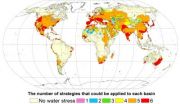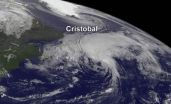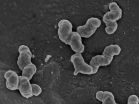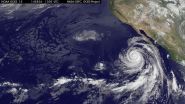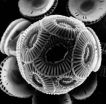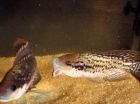(Press-News.org) Water scarcity is not a problem just for the developing world. In California, legislators are currently proposing a $7.5 billion emergency water plan to their voters; and U.S. federal officials last year warned residents of Arizona and Nevada that they could face cuts in Colorado River water deliveries in 2016.
Irrigation techniques, industrial and residential habits combined with climate change lie at the root of the problem. But despite what appears to be an insurmountable problem, according to researchers from McGill and Utrecht University it is possible to turn the situation around and significantly reduce water scarcity in just over 35 years.
In a new paper published in Nature Geoscience, the researchers outline strategies in six key areas that they believe can be combined in different ways in different parts of the world in order to effectively reduce water stress. (Water stress occurs in an area where more than 40 percent of the available water from rivers is unavailable because it is already being used – a situation that currently affects about a third of the global population, and may affect as many as half the people in the world by the end of the century if the current pattern of water use continues).
The researchers separate six key strategy areas for reducing water stress into "hard path" measures, involving building more reservoirs and increasing desalination efforts of sea water, and "soft path" measures that focus on reducing water demand rather than increasing water supply thanks to community-scale efforts and decision-making, combining efficient technology and environmental protection. The researchers believe that while there are some economic, cultural and social factors that may make certain of the "soft path" measures such as population control difficult, the "soft path" measures offer the more realistic path forward in terms of reducing water stress.
(The details about each of the six key strategy areas are to be found below.)
"There is no single silver bullet to deal with the problem around the world," says Prof. Tom Gleeson, of McGill's Department of Civil Engineering and one of the authors of the paper. "But, by looking at the problem on a global scale, we have calculated that if four of these strategies are applied at the same time we could actually stabilize the number of people in the world who are facing water stress rather than continue to allow their numbers to grow, which is what will happen if we continue with business as usual."
"Significant reductions in water-stressed populations are possible by 2050," adds co-author Dr. Yoshihide Wada from the Department of Physical Geography at Utrecht University, "but a strong commitment and strategic efforts are required to make this happen."
Strategies to reduce water stress
"Soft measures"
Agricultural water productivity could be improved in stressed basins where agriculture is commonly irrigated. Reducing the fraction of water-stressed population by 2% by the year 2050 could be achieved with the help of new cultivars, or higher efficiency of nutrients application. Concerns include the impacts of genetic modification and eutrophication.
Irrigation efficiency could also be improved in irrigated agricultural basins. A switch from flood irrigation to sprinklers or drips could help achieve this goal, but capital costs are significant and soil salinization could ensue.
Improvements in domestic and industrial water use could be achieved in water stressed areas through significant domestic or industrial water use reduction, for example, by reducing leakage in the water infrastructure and improving water-recycling facilities.
Limiting the rate of population growth could help in all water-stressed areas, but a full water-stress relief would require keeping the population in 2050 below 8.5 billion, for example, through help with family planning and tax incentives. However, this could be difficult to achieve, given current trends.
"Hard measures"
Increasing water storage in reservoirs could, in principle, help in all stressed basins with reservoirs. Such a strategy would require an additional 600 km3 of reservoir capacity, for example, by making existing reservoirs larger, reducing sedimentation or building new ones. This strategy would imply significant capital investment, and could have negative ecological and social impacts.
Desalination of seawater could be ramped up in coastal water-stressed basins, by increasing either the number or capacity of desalination plants. A 50-fold increase would be required to make an important difference, which would imply significant capital and energy costs, and it would generate waste water that would need to be disposed of safely.
INFORMATION:
To read the Nature Geoscience article: http://www.nature.com/ngeo/journal/v7/n9/full/ngeo2241.html?WT.ec_id=NGEO-201409
The research was funded by: Natural Sciences and Engineering Research Council of Canada and the Canadian Institute for Advanced Research.
Reducing water scarcity possible by 2050
Increased water-recycling and improved irrigation techniques among six strategies identified as key to successfully reducing global water scarcity
2014-08-29
ELSE PRESS RELEASES FROM THIS DATE:
Evidence mounting that older adults who volunteer are happier, healthier
2014-08-29
Toronto, Canada – Older adults who stay active by volunteering are getting more out of it than just an altruistic feeling – they are receiving a health boost!
A new study, led by the Rotman Research Institute at Baycrest Health Sciences and published online this week in Psychological Bulletin, is the first to take a broad-brush look at all the available peer-reviewed evidence regarding the psychosocial health benefits of formal volunteering for older adults.
Lead investigator Dr. Nicole Anderson, together with scientists from Canadian and American academic centres, ...
NASA sees Hurricane Cristobal racing through North Atlantic
2014-08-29
Satellite imagery shows Hurricane Cristobal racing through the North Atlantic on Friday, August 29 while losing its tropical characteristics. An image from NOAA's GOES-East satellite showed Cristobal headed south of Greenland. The previous day, NASA's TRMM satellite saw heavy rainfall occurring in the hurricane.
In a visible image from NOAA's GOES-East satellite on August 29 at 7:45 a.m. EDT, Hurricane Cristobal was moving through the North Atlantic about 500 miles southwest of Greenland. The image was created by the NASA/NOAA GOES Project at NASA's Goddard Space Flight ...
CCNY team defines new biodiversity metric
2014-08-29
To understand how the repeated climatic shifts over the last 120,000 years may have influenced today's patterns of genetic diversity, a team of researchers led by City College of New York biologist Dr. Ana Carnaval developed a new biodiversity metric called "phylogeographic endemism."
It quantifies the degree to which the genetic variation within species is restricted in geographical space.
Dr. Carnaval, an assistant professor of biology, and 14 other researchers from institutions in Brazil, Australia and the United States, analyzed the effects of current and past climatic ...
Hydrogen powers important nitrogen-transforming bacteria
2014-08-29
This news release is available in German. Nitrite-oxidizing bacteria are key players in the natural nitrogen cycle on Earth and in biological wastewater treatment plants. For decades, these specialist bacteria were thought to depend on nitrite as their source of energy. An international team of scientists led by Holger Daims, a microbiologist at the University of Vienna, has now shown that nitrite-oxidizing bacteria can use hydrogen as an alternative source of energy. The oxidation of hydrogen with oxygen enables their growth independent of nitrite and a lifestyle outside ...
NASA animation shows Hurricane Marie winding down
2014-08-29
VIDEO:
This video of NOAA's GOES-West satellite imagery from Aug. 26-29 shows Hurricane Marie winding down into a post-tropical storm.
Click here for more information.
NOAA's GOES-West satellite keeps a continuous eye on the Eastern Pacific and has been covering Hurricane Marie since birth. NASA's GOES Project uses NOAA data and creates animations and did so to show the end of Hurricane Marie.
At 5 a.m. EDT (0900 UTC) on Friday, August 29, Marie became a post-tropical storm ...
'Face time' for the heart diagnoses cardiac disease
2014-08-29
To the careful observer, a person's face has long provided insight into what is going on beneath the surface. Now, with the assistance of a web camera and software algorithms, the face can also reveal whether or not an individual is experiencing atrial fibrillation, a treatable but potentially dangerous heart condition.
A pilot project, the results of which were published online today in the journal Heart Rhythm, demonstrates that subtle changes in skin color can be used to detect the uneven blood flow caused by atrial fibrillation. The technology was developed in a ...
Not all phytoplankton in the ocean need to take their vitamins
2014-08-29
Some species of marine phytoplankton, such as the prolific bloomer Emiliania huxleyi, can grow without consuming vitamin B1 (thiamine), researchers have discovered. The finding contradicts the common view that E. huxleyi and many other eukaryotic microbes depend on scarce supplies of thiamine in the ocean to survive.
"It's a really different way to think about the ocean," says CIFAR Senior Fellow Alexandra Worden, co-author on The ISME Journal paper with CIFAR fellows John Archibald (Dalhousie University), Adrián Reyes-Prieto (University of New Brunswick) and three lead ...
Ready for mating at the right time
2014-08-29
This news release is available in German. The exchange of chemical signals between organisms is considered the oldest form of communication. Acting as messenger molecules, pheromones regulate social interactions between conspecifics, for example, the sexual attraction between males and females. Fish rely on pheromones to trigger social responses and to coordinate reproductive behavior in males and females. Scientists at the Marine Science Center at the University of the Algarve in Faro, Portugal, and at the Max Planck Institute for Chemical Ecology in Jena, Germany, ...
China's reform of R&D budget management doesn't go far enough
2014-08-29
In almost 20 years, China's R&D expenditure as a percentage of its gross domestic product has more than tripled, reaching 1.98 per cent in 2012. This figure surpasses the 28 member states of the EU, which collectively managed 1.96 per cent.
However, despite this, China saw a sharp decline in money spent on scientific research, in particular applied research. Basic research funding plummeted from 5.2 per cent in 1995 to 4.7 per cent in 2011, and applied research funding fell from 26.4 per cent to 11.8 per cent in the same years.
This is Dr Cao's second Science article ...
Snails tell of the rise and fall of the Tibetan Plateau
2014-08-29
Boulder, Colo., USA - The rise of the Tibetan plateau -- the largest topographic anomaly above sea level on Earth -- is important for both its profound effect on climate and its reflection of continental dynamics. In this study published in GSA Bulletin, Katharine Huntington and colleagues employ a cutting-edge geochemical tool -- "clumped" isotope thermometry -- using modern and fossil snail shells to investigate the uplift history of the Zhada basin in southwestern Tibet.
Views range widely on the timing of surface uplift of the Tibetan Plateau to its current high ...
LAST 30 PRESS RELEASES:
Postpartum breast cancer and survival in women with germline BRCA pathogenic variants
Self-administered acupressure for probable knee osteoarthritis in middle-aged and older adults
2024 Communicator Award goes to “Cyber and the City” research team based in Tübingen
A new therapeutic target for traumatic brain injury
Cosmic rays streamed through Earth’s atmosphere 41,000 years ago
ACP issues clinical recommendations for newer diabetes treatments
New insights into the connections between alcohol consumption and aggressive liver cancer
Unraveling water mysteries beyond Earth
Signs of multiple sclerosis show up in blood years before symptoms
Ghost particle on the scales
Light show in living cells
Climate change will increase value of residential rooftop solar panels across US, study shows
Could the liver hold the key to better cancer treatments?
Warming of Antarctic deep-sea waters contribute to sea level rise in North Atlantic, study finds
Study opens new avenue for immunotherapy drug development
Baby sharks prefer being closer to shore, show scientists
UBC research helps migrating salmon survive mortality hot-spot
Technical Trials for Easing the (Cosmological) Tension
Mapping plant functional diversity from space: HKU ecologists revolutionize ecosystem monitoring with novel field-satellite integration
Lightweight and flexible yet strong? Versatile fibers with dramatically improved energy storage capacity
3 ways to improve diabetes care through telehealth
A flexible and efficient DC power converter for sustainable-energy microgrids
Key protein regulates immune response to viruses in mammal cells
Development of organic semiconductors featuring ultrafast electrons
Cancer is a disease of aging, but studies of older adults sorely lacking
Dietary treatment more effective than medicines in IBS
Silent flight edges closer to take off, according to new research
Why can zebrafish regenerate damaged heart tissue, while other fish species cannot?
Keck School of Medicine of USC orthopaedic surgery chair elected as 2024 AAAS fellow
Returning rare earth element production to the United States
[Press-News.org] Reducing water scarcity possible by 2050Increased water-recycling and improved irrigation techniques among six strategies identified as key to successfully reducing global water scarcity
